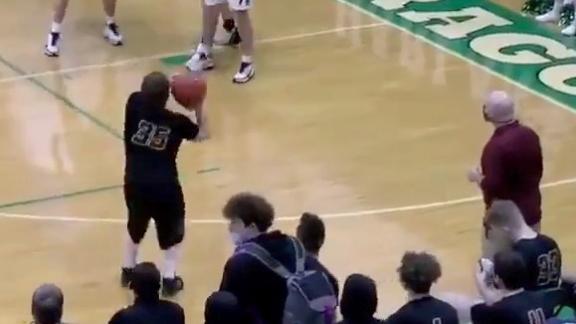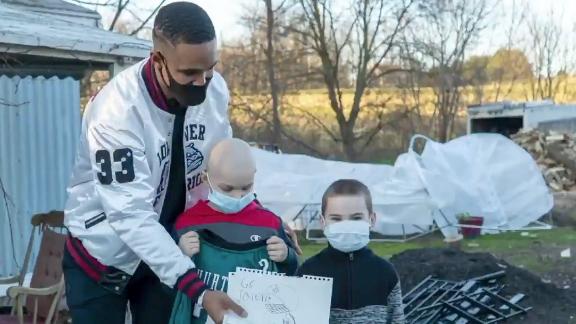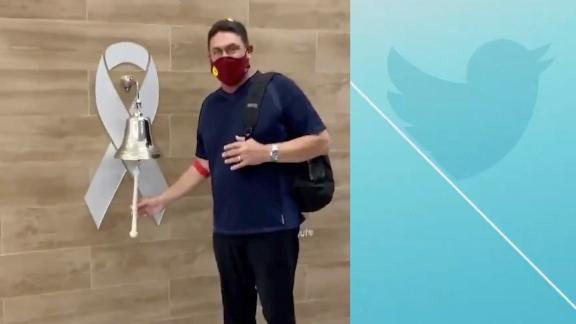The breakout star of the women's NCAA tournament didn't make the Final Four, but the buzz hasn't stopped for Courtney Vandersloot. She'll be flown to Connecticut to attend Monday's WNBA draft in person. A few days before, she'll be in California as a finalist for the John Wooden Award, given to the nation's top male and female players. She already won the Nancy Lieberman Award as the top point guard and the Frances Pomeroy Naismith Award for the best player 5-foot-8 and under.
But for now, the question "How'd she thread that pass?" is replaced by, "Where's she going in the draft?" Vandersloot, the dazzling playmaker and scorer who put Gonzaga on the national map and into the Elite Eight, enters Monday's WNBA draft as one of its hottest commodities. Her stock rose in a tournament where she averaged 19.8 points and 10.2 assists per game on the nation's highest-scoring team.
The ponytailed whippet was raised in Kent, a Seattle suburb. There, Vandersloot put her dreams in writing. In third grade, she wrote a school paper about playing in the WNBA. Soon, her dream will be reality. "It feels great," she said of her elevated profile among pro prospects. "I don't want to think that after college my career will be done. It's something that I worked for since I was little, not just to get to the college level, but to get beyond that."
During the tournament, Vandersloot became the first NCAA Division I college player, male or female, to surpass 2,000 points and 1,000 assists in her career. She broke the single-season assist record with 367. Her passing is so slick that her own teammates have been fooled.
"You don't think you're open whatsoever, and next thing you know the ball is shooting between two defenders in your hands," said Katelan Redmon, a junior swing player. A Vandersloot reverse layup once made the ESPN Top 10 highlight show. Coach Kelly Graves called her play "mesmerizing," and NBA Hall of Famer John Stockton, the Gonzaga alum who worked with her, compared her to Wayne Gretzky.
"It's rare that it's an individual player that makes me want to tune into women's college basketball," said Doris Burke, who called the tournament for ESPN. "Courtney made me want to watch. Very much the same way [Wade Trophy winner] Maya Moore I find to be compelling TV, I find Courtney to be compelling TV."
But while the public saw a big splash, WNBA coaches and general managers weren't surprised. "I'm not too shocked," said Mike Thibault, the Connecticut Sun coach who sounds regretful he doesn't have a first-round pick. "We've been following her since sophomore year. It solidified for us she's the best all-around guard in the draft. I'll be really surprised if she doesn't go in the first seven picks in the draft."
Not bad for a kid who wasn't recruited much by big-time programs, including those in her own backyard (the University of Washington) or other Pac-10 schools. With the pro draft looming, Vandersloot's father, Bill, marvels at the then and now. "Now, there's a whole bunch of teams that want her," he said. "Oh my goodness, I never thought that."
Vandersloot wound up at Gonzaga almost by accident, tagging along with a Gonzaga-crazed friend for a basketball camp. "As soon as I got on campus, I just fell in love with it," she said. "I wasn't really being highly recruited and I just didn't want to go through the stressful recruiting process, so I committed early to Gonzaga." She connected with coaches, especially Graves -- "a special guy," she said.
Keith Hennig, Vandersloot's coach at Kentwood High, said he'd talk her up to big-school recruiters, but they weren't interested. They figured the skinny, 5-8 kid with the blond hair would get pushed around in the Pac-10. Hennig knew differently. He and his assistant coach wife, Wendy, both former players for Central Washington University, practiced with the Kentwood girls. Keith Hennig, 6-2 and 180 pounds, took on Vandersloot during scrimmages and drills. They squared off, one-on-one, before or after practice.
"I did not take it easy on her at all," he said. "I was more physical than anything she's ever been used to. At times, I wasn't too nice. I would ride her and foul her. I'd put my hand in her face and she would whine and complain about fouls. I'd say, 'There's no fouls out here.'"
By her junior and senior years, Vandersloot could dribble past Hennig. The couple noticed something else right away -- Vandersloot was the team's hardest worker, and most ambitious. She'd grab a teammate and they'd practice alley-oops and reverse layups, stuff you'd usually see guys do on the playground. Big-time programs, Hennig said, often recruit to a model. "Courtney doesn't fit that model," he said. "They failed to recruit her heart, failed to recruit her effort."
As for durability, her dad proudly points out Vandersloot missed just two games in her college career, due to an ankle sprain. As a kid, Vandersloot loved to play sports and was good at them. Vandersloot came late to AAU ball because she was busy excelling at soccer -- she grew up with a Mia Hamm poster on her wall. At age 11, she was on a Little League fast-pitch softball team that was runner-up at state.
Her family, including older sister Kelsey, also an athlete, had a house on a cul-de-sac with one basketball hoop in front and a sports court -- basketball and tetherball -- that Bill constructed in back. Bill remembers that kids, usually boys, often stopped by to ask if Courtney could come play hoops. Getting to the door first meant you had dibs on Courtney for your team.
Bill Vandersloot isn't quite sure where this came from. He was a high school wrestler and football player; his wife, Jan, played summer-league softball. Both work at Boeing, Bill as an engineer and Jan in the company's travel agency. Bill says he's low-key about their daughter's accomplishments ("I have nothing posted in my cubicle," he says), but co-workers caught on. "Most of 'em found out reading the paper," he said. "They'd ask, 'Is that your daughter?'"
Coaches and general managers point out the WNBA is a different ballgame. Vandersloot built her résumé mostly in the West Coast Conference, not against elite schools in the Pac-10, Big East or SEC. While noting her impressive court vision, decision-making and shooting, Thibault says Vandersloot will have to learn some things defensively and be able to play against a great player at her position every night. Big bodies and long arms make threading passes harder in the league.
Just another challenge for Vandersloot.
"I'm excited," she said. "Every level you get to is a little bit better. You have to be ready to go at it with everything you've got. I'm going to go in with an open mind and learn as much as I can and hopefully learn to adapt quickly."
For her, the best part of hitting the big time is she gets to keep playing. For spectators, the best part is they get to keep watching.
Elliott Almond of the San Jose Mercury News contributed to this report.




